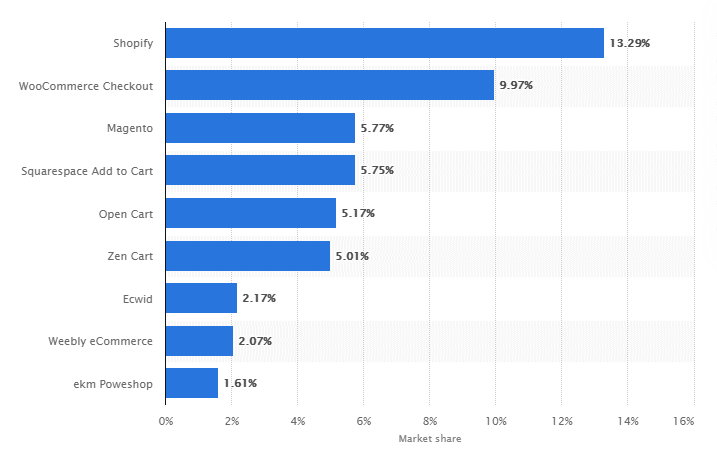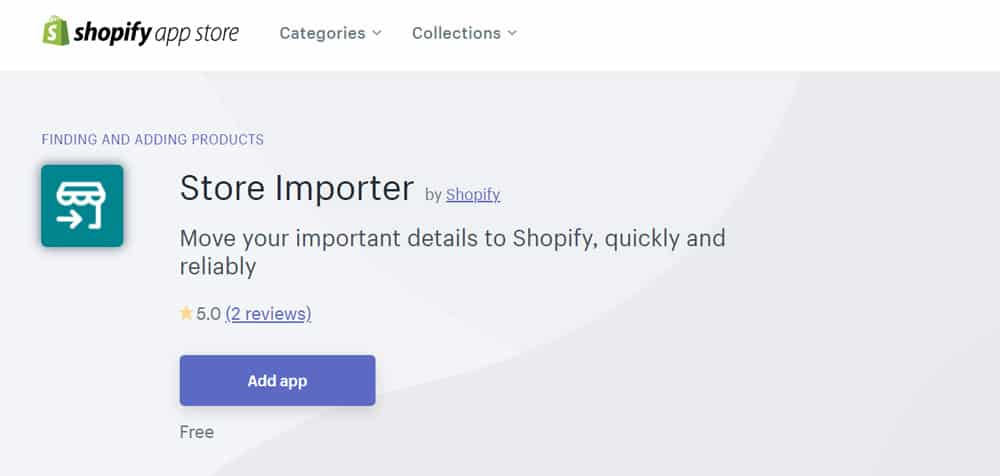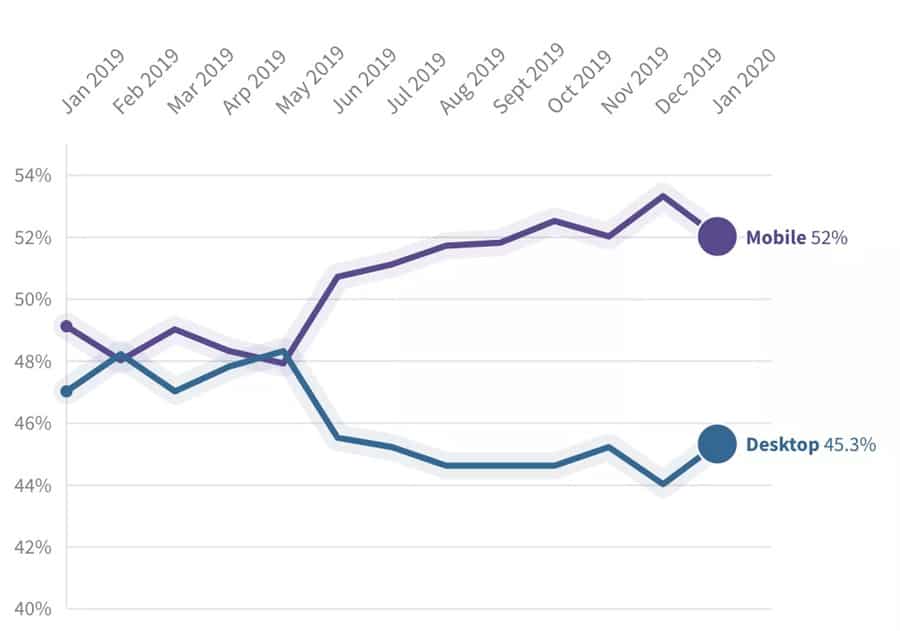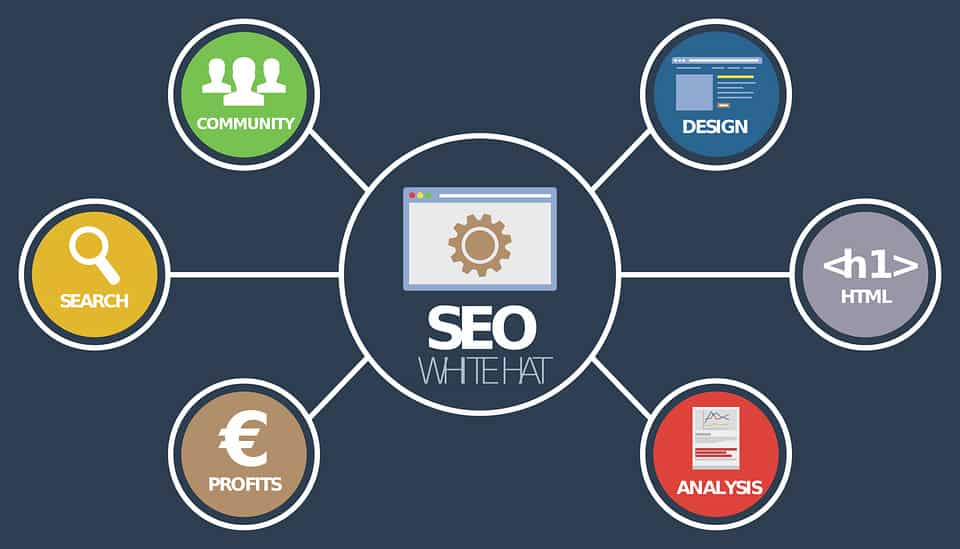Now more than ever, most business owners are looking to migrate from Magento to Shopify. In a huge industry with competition, there’s a need for eCommerce business owners to focus on selling their products in the right marketplace. One thing you don’t need is additional work. Especially work that takes you away from your primary job of making and closing sales.
In 2020, Magento 1 reached its end of life. Magento 1 users were at risk of security breaches and not being PCI compliant. PCI is short for the Payment Card Industry Data Security Standard. They create international guidelines for marketplaces worldwide.
Considering these factors, the solution is to immediately upgrade to Magento 2, securely integrate Magento store to Shopify store or leave the platform entirely. Unfortunately, the upgrade to Magento 2 is costly, with prices sometimes reaching five figures. So, to keep overhead costs down, business owners are having to explore other eCommerce platform options.
The functionality of Magento continues to improve, but the cost for users continues to rise. The implication of this is Magento may now be a better fit for medium to large-sized businesses. With this in mind, it’s not shocking that small to mid-sized enterprises are looking to migrate from Magento to Shopify because of these issues.

According to Statista, Shopify caters to 13.29% of eCommerce business owners in the UK. Recent data from Builtwith shows that over 3.6 million stores run on Shopify worldwide.
With a closer inspection, it’s easy to see why Shopify’s ownership has been increasing. For one, this marketplace does not require any coding knowledge to use.
Also, compared to other marketplaces, the cost of running your online store on Shopify is more affordable. These and other features may mean Shopify will remain a user favourite for a long time. As it continues to improve, it will only become more popular. More businesses will migrate from Magento to Shopify in the coming years.
To migrate from Magento to Shopify can be a seamless process if you are well prepared. You don’t want to lose data. You certainly don’t want to meet a roadblock at every step of the process.
This is where we come in. Here, we will be providing a comprehensive guide to migrating from Magento to Shopify hassle-free. In it, we will provide you with a step-wise explanation of how to migrate your online store from Magento to Shopify. Or if you want to do it hassle-free, hire our Shopify Agency.
Jump to a Specific Section
Why Choose Shopify Over Magento
What To Consider Before Migrating from Magento to Shopify
Migrate From Magento to Shopify (Step-by-Step)
Why Choose Shopify Over Magento
Magento and Shopify are very different shopping platforms. These two platforms are also distinct in the way they work. They are also two of the most popular eCommerce platforms in the UK.
You can also integrate Magento 2 and Shopify together to synchronise categories, products, and orders.
In this section, we will compare both Magento and Shopify. This way, you can easily choose between both eCommerce platforms.
SaaS and PaaS
Shopify uses the SaaS (Software as a Service) model while Magento uses the PaaS (Platform as a Service) model. This is just a fancy computer language that explains a fundamental difference between Shopify and Magento.
Shopify is centrally hosted, and customers pay to use it on a subscription basis. Magento, on the other hand, is a cloud computing service. It allows customers to develop their business on the application. However, customers are not responsible for maintaining its infrastructure.
In simple English, Shopify is an all-in-one platform. You can build your eCommerce store from start to finish without knowing how to code. To use Magento, you have to set up your store with an external hosting platform.
As such, to use Magento effectively, you may need some knowledge of app development. This will be crucial to editing your store, adding new features and more.
Ease of Use
Shopify is easy to use while Magento is suitable for advanced developers. The former comes with an interface, expertly designed with the newbie in mind. This makes it accessible to all people, regardless of their background in technology — or the lack thereof.
Shopify’s wizard mode allows anyone to set up an eCommerce store quickly and without stress. Magento can be difficult to use for people who have no technology background. It does not have a wizard to help with setting up the store.
Integration with Dropshipping Inventory Apps
Shopify offers direct integration with dropshipping inventory apps. An example of a dropshipping inventory app is Oberlo. Magento does not offer this level of integration.
Site Speed
Shopify does not get slower as you add more products to your store. Both Magento and Shopify allow you to have an unlimited number of products on your online store.
However, many eCommerce entrepreneurs report that Magento tends to get slower as you add more products to your store. Shopify does not have this issue.
This is because of the difference in hosting solutions. Shopify is centrally hosted while Magento stores are hosted externally. Its central hosting allows Shopify to remain fast regardless of the number of products you have.
Payment Gateway
Shopify has a payment gateway with zero transaction fees. It also allows for the integration of third-party payment gateways. Magento only integrates third party payment gateways.
Shopify Point of Sale
The Shopify Point of Sale is a tool business owners can use to merge their online and in-store businesses. It allows for functions never seen before in the eCommerce marketplace.
With Shopify POS enabled, customers can browse in-store and buy online. Your customer can choose to buy products online and pick them up in-store. A customer can also buy in-store and have their orders delivered to their houses. It is innovation at its best.

Ease of Customization
Shopify sites are easy to customize. The process is even easier with a drag and drop app available on the Shopify App Store.
On the other hand, Magento requires you to edit the HTML/CSS code to change the design of your shopping platform. People who have no coding knowledge may have to hire a developer to tweak little things. In the long run, this can prove to be very expensive.
Integrated Blog
Shopify offers a simple blog function. Magento offers a customizable blog function, as well. But as with everything else, it’s only as good as the developer that customizes it.
Varied Solutions for Product Unloading
Shopify is a great pick for you if you also do business on marketplaces like Instagram, Amazon and eBay. The eCommerce giants offer a special service that allows for the automatic unloading of all products.
You won’t even have to install new modules to do the unloading. For eCommerce business owners that do business via other sites, this makes the migration so much simpler.
High Security
One of the advantages you stand to enjoy when you move from Magento to Shopify is its encryption level. For one, you don’t even have to do anything special.
By virtue of being on Shopify, your site will come with an SSL certificate. Also, it will work using the HTTPS protocol. In layman’s terms, your new Shopify website will automatically be 100% secure.
Themes and Designs
Shopify has a wide array of easy-to-use themes. There are more paid ones than free ones. But the free ones are classic themes with uninhibited editing capabilities. Shopify themes are also optimized for mobile. Your store will look and act right both on desktop and on mobile.
Magento has fewer themes to choose from, some are free, some are paid. But, not all of them are mobile-friendly.
You can add more themes through the backend if you have advanced developer knowledge. However, for most web owners, that is just not the case.
For this, we do provide Magento Development Service.
Costs
Neither Shopify nor Magento charge set-up fees. Shopify runs different subscription plans. Magento is a free app, but its hosting is outsourced. Due to this, the fees vary for Magento according to the different hosting providers.
Shopify does not have any bandwidth charges. On the other hand, Magento’s bandwidth charges depend on the hosting provider.
Apps, Add-Ons, Plugins, Extensions
Both Magento and Shopify have an extensive library of apps and plugins with different functions. These libraries house an extensive collection of apps for all kinds of functions.
Shopify has thousands of free and paid apps for you to choose from. In fact, many of them are activated at the touch of a button. Gift cards, resolving cart abandonment, adding social buttons, or a countdown timer, the possibilities are truly limitless with extensions.
With the points above, it’s easy to see why the decision to migrate from Magento to Shopify is a great idea for your business. Over the next few paragraphs, we will provide helpful hacks to help you do it seamlessly.
What To Consider Before Migrating from Magento to Shopify
Of course, the first thing to consider is data. Your focus should be on how to migrate your eCommerce website without losing any data. To do that, you need to know how much website data you have.
But there are other things you need to consider so the migration process goes smoothly. You can lose qualities such as your SEO ranking, customer loyalty and traffic to your site. If this happens, your plan to migrate from Magento to Shopify will be a disaster.
SEO
The Search Engine Optimization of your site determines how highly your website will rank on search engine result pages. The importance of search for eCommerce businesses is substantial. A drop in rankings and consequently organic traffic can affect your revenue in no small way.
As such, it is very important to find out how to preserve your SEO rankings. To preserve it, you will need to prepare 301 redirects from old pages to new ones. We will explain more about that later on.
Want a helping hand in SEO? Then you should visit our eCommerce SEO Service page.
Fitting in Old Content Into New Architecture
Moving content from one shopping platform to another can be daunting. And, eCommerce platforms like Magento and Shopify are as different as night and day. After importing data into Shopify, some of the content and products may be disorganized.
This will not look aesthetically pleasing when you eventually relaunch your store. Hence, you must think of ways to solve this problem before you migrate from Magento to Shopify. Not to worry, we will also cover ways to rearrange wrongly arranged data in this article.
Media Transfer
Typically, images and videos are a part of product descriptions, blogs, categories, and other pages. Usually, this information is not a part of the existing database.
Instead, these images will have simple links in the content attached to them. As such, after moving images, it’s best to change the links to the correct ones.
Integrations with Other Apps
Here, you will need to plan accurately for this step. Take note of the features you already have in your Magento Store. Then, find out what their counterparts are on Shopify.
Usually, similar functionality will come in the form of Shopify apps. Figure out the ones you need. Also, find out if the ones you need are free or paid. If you don’t cover all of the bases here, it may affect the overall functionality of your new store.
Customer Security
In today’s digital atmosphere, security is a dicey topic. If you’re looking to cement your online business, customer security must be top of your agenda. It also means there’s no exact methodology that can migrate customer passwords from Magento to Shopify.
The reason is each marketplace platform comes with its own unique encryption system. As a result, you have to formulate a strategy to communicate the change in platform with your customers.
Here, emails can work effectively. For example, with just one email newsletter, you can easily announce your new store, offer discounts and encourage customers to activate their accounts on the new platform.
Related Article: Upgrading to Magento 2
Migrate From Magento to Shopify (Step-by-Step)
For the best results, it’s advisable for you to follow a stepwise process for migration. Here’s what you need to do:
Step 1: Don’t Shut Down Your Business
This goes without saying, but it may be helpful to mention this just in case. Don’t shut down your business operations on Magento during the migration process.
The process can be seamless, but it will take some time. You don’t want to close off your income stream during that time. You can migrate from Magento to Shopify while keeping your store open on Magento. Keep your business running!
Step 2: Create a Shopify Account
This part is fairly straightforward. Enter your email address, then click on “start free trial”. Create your store, and that’s it. You don’t even need to put in your credit card details until the trial period is over.

Shopify’s free trial lasts for fourteen days. You can use this period to get familiar with the features of the eCommerce store without committing to a payment plan. It’s an excellent opportunity for hands-on learning about the eCommerce platform. This is also a good time to see what the Shopify hype is all about.
To start a free trial on Shopify, click here. Make good use of their customer care team. They will be glad to assist you with your learning process. Once the free trial period ends, you will have to add your credit card to use and access the store.
Shopify has three pricing plans namely Basic Shopify, Shopify and Advanced Shopify.
- Basic Shopify is priced at $29 per month.
- Shopify is priced at $79 per month.
- Advanced Shopify is priced at $299 per month.
Each plan comes with different features that set it apart from the other. For instance, a Shopify plan allows an account to have up to five staff members, while Basic Shopify allows two.
Step 3: Make a Decision on Elements That Require Migration from Magento to Shopify
You may be thinking, “Why will I want to leave anything behind?” Hear us out first. Start by taking the important stuff. This includes customer details, product information, blog posts, graphics, and other marketing content. You will also need to migrate categories from Magento to Shopify. Your product and content categories should not be left out.
But we are sure that in the midst of all this, some data will prove to be outdated. In this ever-evolving world we live in, that is perfectly okay. However, you have to take special care not to take this useless data into your new space at Shopify.
Go through your Magento store thoroughly and figure out what you will migrate. Also, figure out what you will have to leave behind. If your Magento store is not too old, this step may not apply to you. On to the next one!
Step 4: Create a Backup of Your Magento Store
If your migration is to be successful, your data must be safe. If you end up losing your data, then the migration will all be for nothing. You will have to start from scratch! Some Magento hosting providers provide automatic backups for their customers.
If you’re such a customer, great. Just in case, you should still check that all your data is backed up. If your hosting provider doesn’t, here’s what you need to do.
How to Backup Magento 1
- Go to Magento’s Admin Panel, then click on ‘System’>>’ Tools’>>’ Backups’.
- Choose the type of backup you want to create. The types are System backup, Database backup and Media backup.
- The System backup creates a backup of your file and database system. The Database Backup creates a backup of your database. Finally, the Media Backup creates a backup of all the media in your store.
- A warning will pop up. It will indicate that the backup process will take time. And that you will need to wait. Click OK.
- Create a backup name. You can only use numbers, alphabets and spaces in the backup name you create. There will be a checkbox that says “Put store on maintenance mode while in backup creation”. You can decide to check it or not.
- If you selected System Backup, you will also see a checkbox that says “Exclude media folder from backup”. Don’t check that box. You need all your data from your store.
How to Backup Magento 2
There are three ways to backup your Magento 2 store.
1) Via the Admin Panel.

This is the same process as Magento 1, except for a few changes. Instead of ‘System’>>’ Tools’>>’ Backups’, it is ‘System’>>’ Backups’ in Magento 2. It is best to check the maintenance checkbox when it comes up in Magento 2.
2) Via the Command Line
Switch to the Magento file system owner. Use the backup command after that.
This command: Magento setup:backup [–code] [–media] [–db] will do the trick. It turns on maintenance mode. It also backs up the file, media and database. Then it turns off the maintenance mode.
3) Manually
This is arguably the safest backup method because it exports the files to your computer’s local storage. Go to the file structure of your hosting account.
Find the /public_html directory of your account. If your site is stored in a subfolder, find the folder in the /public_html directory.
Download the directory to your computer. Or copy it, then save it to another hosting folder.
Step 5: Requirements for Migration
There is more than one way to migrate from Magento to Shopify. These methods include:
- The use of migration applications.
- Migration applications for a set of data in conjunction with other types of applications for more specific data
- Hiring a professional developer
There are requirements you should consider before deciding how to migrate from Magento to Shopify. These requirements include:
- Cost. The cost of Magento 2 is one factor that sends business owners running to Shopify. Hence, the migration process should not be as expensive as Magento 2 is.
The most expensive Shopify pricing option isn’t necessarily the most effective one. Cut costs if you can, but at the same time, make a decision based on the functionality of whatever option you want to choose. And then, choose one that works best for your budget.
- Time. Figure out how long each method will take for you. Usually, this timeline is linearly related to the amount of data you have on your Magento site. Your Magento site may not be working as fast as it should be, while this backup-migration process continues. You don’t want that to be the case for an extended period.
- Safety from loss of data. The migration process is all for nothing if you choose a method that cannot guarantee the safety of your data. Look into that thoroughly.

A common choice among the three methods is the use of migration applications. There are several types available including Transporter, Import Store, Cart2Cart.
For this guide to migrating from Magento to Shopify, we recommend the Import Store app from Shopify because it is a Shopify app. It has been specifically designed to make the migration from Magento to Shopify seamless.
For people who are not tech-savvy, it is a most helpful tool. Combined with your data from Magento, you will be able to complete your migration easily.
Go to your Shopify Admin page. Click ‘Apps’. Then click on ‘Import Store’ and download.
Step 6: Export Your Data from Magento
This is simply the process of transporting your data on Magento to a spreadsheet format. This is important so that Shopify can understand the data when it receives it.
To export your data from Magento, go to the Admin Panel.
- Click ‘System’ on the Admin panel. Then click ‘Data Transfer’ and ‘Export’.
- Three entity types will show up under the Export settings and you must pick one. They are Products, Customer Main File and Customer Addresses. The export process must be repeated to export all three types. Repeat it and select a different type each time. This will help you migrate products from Magento to Shopify.
- Under ‘Export File Format’, choose ‘XML’ if you’re using the Import Store App. If you’re using a different migration app, choose CSV. A migration app that uses the CSV format is Transporter for Shopify Plus. You should also pick CSV if you want to import the data into Shopify manually.
If you want to export products, customer main file, and customer addresses, you’ll need to repeat the process for each one.
Once that’s all done, all your data will be on a spreadsheet. This spreadsheet can be easily understood by Shopify’s software, therefore, easing the migration process.
Step 7: Import Your Store Data to Shopify
By now, your store’s data is in a ‘language’ Shopify can understand. It is now time to import that data into Shopify. The steps are as follows:
- Go to the Shopify admin page. Choose ‘Apps’. Then click ‘Import Store’.
- A menu will pop up. Pick Magento from that menu.
- Click ‘Upload Files’. Choose ‘Add file,’ then select the files you exported from Magento.
- Pick the Magento file you need to download.
- Finally, click on the ‘Continue import’ option. And then, ‘Import’.
At this stage, the importation process is complete. You have managed to migrate all of your products and data from Magento to Shopify.
Step 8: Go Over and Organize Your Imported Data
It is not enough to have an easy exportation and importation process. It is also very important to check the imported data to make sure nothing is missing. You also want to make sure there are no mistakes.
If some data is missing or there is an error, it’s not the time to panic. Technology can be buggy. Errors can happen when we try to migrate products from Magento to Shopify. Here, you can just add the missing information again, manually.
Just visit the ‘Products’ or ‘Customers’ page on the admin panel. Choosing between ‘Customers’ and ‘Products’ depends on the kind of data you would like to add.
There are other problems you may note as you go through your data. Many of them can be resolved by manually re-entering data. For others, it’s possible to find a resolution within the Shopify app.
Some of these problems include:
- Your data has been imported successfully, but you have noticed a few changes. These changes can be edited in the Shopify app. Just click on ‘View items’ on your import summary.
- Items sold in bundles may fail to import. Installing the Bundle Products and Discounts app will help to correct this error.
- Hidden products. Some products may be mistakenly set to ‘hidden’. To fix this, you must reset your Shopify store’s product visibility.
- Products without dimensions. All you have to do here is add the dimensions from the product description page.
- Missing product specifications. Your product may be missing some variations like colour and flavour (depending on what you’re selling). This means its importation was not successful. Just fill in whatever is missing on the product description page.
Another Awesome Article: Latest eCommerce Trends to Watch
Step 9: Customize Your New Shopify Store
Once your data is fully set up, it is now time to design. This is one area where you will fully enjoy the benefits of a Shopify store. Customization is so much easier on Shopify than Magento. You can recreate your store in the theme and colours you want — and with minimal stress too. To start, log in to your Shopify account.
Shopify has inbuilt themes ready for you to use instantly. Some of the themes are free, while others are paid. Each theme can be customized so much that it won’t appear to be a theme. And the best part is, you need no knowledge of coding to achieve this.
All Shopify themes are mobile responsive. This means your new eCommerce store will work properly on mobile as well as desktop. 27% of consumers used their mobiles to buy something quickly in 2018. This figure is according to Statista. That was three years ago! Now, imagine how important a mobile-friendly site will be in 2021.

The DragDropr app from Shopify will help you edit your store using the drag-and-drop feature. Consider downloading it to make your editing experience even easier. This is a pro tip to help you crack the design aspect of migrating from Magento to Shopify, in my book.
Step 10: Save Your SEO Rankings
A drop in SEO rankings immediately after a successful migration is not unusual. Google needs time to process your new store and update its rankings. However, you must take active steps to preserve your SEO rankings.
To save your SEO ranking, you need to create a ‘301 redirect’. A 301 redirect is a tool that redirects site visitors from your old site to your new site. It indicates your site has been permanently changed to a new URL.
Here’s how to create a 301 redirect after you migrate from Magento to Shopify:
- Open your Shopify Store. Click the Redirection plugin. This plugin will redirect your customers to your new Shopify store.
- Enter the previous URL and the destination URL.
- Upload them together, and your ‘301 redirect’ will be active.
You may need to map out all the pages on your Magento site. Then, redirect them to your new Shopify site. Once this is done, be sure to test these redirects. Make sure they are working properly. This is a great way to make the transition as seamless as possible. Your SEO rankings will definitely improve after some time.
Magento To Shopify Migration Checklist
Think you may miss out on something while moving your online store from Magento to Shopify? Here’s a quick rundown to keep you on point:
- Don’t Shut Down Your Business. Keep your business running.
- Create A Shopify Account. Use the free trial to get familiar with the shopping platform.
- Decide What Needs To Be Migrated. Figure out what data needs to migrate to Shopify and what needs to stay back.
- Create A Backup Of Your Store. Backup your data.
- Part of how to migrate from Magento To Shopify is deciding what method is best for you to migrate successfully.
- Download The Import App. The Import App is an easy to use migration app from Shopify.
- Export Your Data From Magento. Compile your data from Magento and translate it to a format Shopify can understand.
- Import Your Store Data To Shopify. Bring the translated data into Shopify with the Importer App.
- Go Over And Organize Your Imported Data. Make sure all your data is properly arranged.
- Customize Your New Shopify Store. Design your store with Shopify’s inbuilt tools.
- Save Your SEO Ranking. Redirect your customers from your Magento store to your Shopify store.
With that, you should have an ultra-new Shopify store ready to support your eCommerce business.
Related Article: How to Migrate from Shopify to Magento
Migrating from Magento to Shopify Can be Simple
This has been a lot to read. It is probably also a lot to take in. However, it is important to have as much information as possible on such a subject. After all, switching your marketplace is a move that can either make or break your business.
You have just gone through a comprehensive guide to migrating from Magento to Shopify. We hope this article has made the concept less vague. We also hope the tips to migrate from Magento to Shopify were helpful.
If you follow all the steps explained here, you should have your new Shopify store in no time. However, we find that most people get confused about the technicalities involved. For others, they simply do not have the time to take on this task.
Of course, there’s another option you can explore. Bing Digital, an eCommerce Agency, provides digital agency services to eCommerce businesses like yours. Our experts can take over the migration process, making sure you don’t lose anything in terms of branding, data and overall setup. Contact us to discuss your options with an eCommerce expert today!
Congratulations in advance on your new store!
